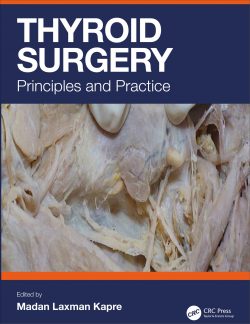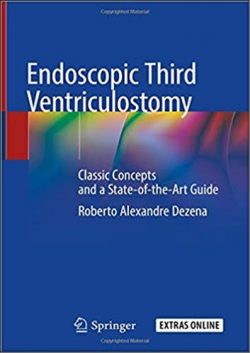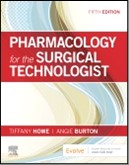This open access book presents the diagnosis, investigation and treatment of neurovascular diseases, and offers expert opinions and advice on avoiding complications in neurovascular surgery. It also covers complication management and post-operative follow-up care. The book is divided in to three parts; the first part discusses common approaches in neurovascular surgery, describing the steps, indications for and limitations of the approach, as well as the associated complications and how to avoid them. The second part addresses surgical treatment based on pathology, taking the different locations of lesions into consideration. The third part focuses on the technological developments that support neurovascular surgery, which may not be available everywhere, but have been included to help vascular surgeon understand the principles.
This book is a guide for young neurosurgeons, neurosurgery residents and neurosurgery fellows, as well as for medical students and nurses who are interested in neurosurgery or are associated with this field in any way. It is also a useful teaching aid for senior neurosurgeons.
Pterional approach for neurovascular surgery.- Eyebrow keyhole approach for neurovascular surgery.-Fronto-orbito-zygomatic (FOZ) approach for neurovascular surgery.-Lateral supraorbital approach for neurovascular surgery.- Interhemispheric approach for neurovascular surgery.- Subtemporal approach for neurovascular surgery.- Lateral suboccipital approach for neurovascular surgery.-Transmastoid approach for neurovascular surgery.- Middle fossa approach for neurovascular surgery.- Basic endovascular technique for neurovascular surgery.- Surgery of posterior communicating artery aneurysm.- Surgery of IC-Anterior choroidal aneurysms.- Surgery of paraclinoid aneurysm.- Surgery of anterior communicating artery aneurysms.- Surgery of middle cerebral artery (MCA) Aneurysm.- Surgery of posterior cerebral artery aneurysm.- Surgery of upper basilar aneurysm.- Surgery of superior cerebellar artery aneurysm.- Surgery of posterior inferior cerebellar artery (PICA) aneurysms.- Surgery of giant aneurysm.- Surgery of posterior fossa AVM.- Endovascular coiling of intracranial aneurysms.- Neuroendoscopic surgery for intracerebral hematomas using a transparent sheath.- Surgery of intracerebral hemorrhage.- Intracranial dural arteriovenous fistula: Microneurosurgery basics and tricks.- Moyamoya disease basic concepts of diagnostics and treatment.- Adenosine in complex aneurysm surgery.- Spinal arteriovenous malformations.- Vasospasm following aneurysmal subarachnoid hemorrhage.- Retractorless surgery of vascular lesions.- FLOW 800 for vascular surgery.- Gamma knife surgery for atrio venous malformations. “A big spectrum of readers from residents, to fellows, to young and even experienced neurosurgeons will be interested in this book. … The chapters are written in a reader-friendly language, easy to understand and to follow. This book will be a great addition to any neurosurgical library and will be a reference to go to for many years to come.” (Pascal Jabbour, Operative Neurosurgery, Vol. 17 (3), September, 2019)
Dr. Julius July completed his fellowship in neurovascular surgery at the Department of Neurosurgery, Fujita Health University Hospital, Toyoake, Nagoya, Japan in 2003 and in neuro-oncology and skull-base surgery at the Department of Neurosurgery, Toronto Western Hospital, University of Toronto, Canada in 2007. He is also a certified international fellow of the American Association of Neurological Surgeons (IFAANS), and a member of the Congress of Neurological Surgeons (CNS) and Asian Congress of neurological surgeons (ACNS).
He is a member of the neuro-oncology and neurovascular committee of the Indonesian Neurosurgery Society (PERSPEBSI), and vice treasurer of the Indonesian Neurosurgery Society (PERSPEBSI). He has published numerous journal articles and books and is an editorial board member of Medicinus (Medical Journal of Pelita Harapan University), the Journal of Spine and Neurosurgery, the Indonesian Biomedical Journal and the Asian Journal of Neurosurgery. He is currently an associate professor at Department of Neurosurgery and director of clinical education at the Medical Faculty of Universitas Pelita Harapan, Tangerang, Indonesia. He is also a staff neurosurgeon at the Neuroscience Center, Siloam Hospital Lippo Village. He is involved in teaching and mentoring neurosurgery residents and medical students. His areas of interest include neurovascular surgery, neuro-oncology, and neuro-endoscopy surgery.
Eka J Wahjoepramono, is currently a professor, chairman and dean of the Medical Faculty of Universitas Pelita Harapan, Tangerang, Indonesia. He is an active neurosurgeon at the Neuroscience Center, Siloam Hospital Lippo Village. He is an editorial board member of several national and international journals and is a widely published author. He is also a member of AANS (American Association of Neurological Surgeons), vice treasurer of WFNS (World Federation of Neurological Societies), chair of the educational committee of AASNS (Asian Australasian Society of Neurological Surgeons), the past president of ACNS (Asian Congress of neurological surgeons), and a member of neurovascular committee of the Indonesian Neurosurgery Society (PERSPEBSI)..
This open access book presents the diagnosis, investigation and treatment of neurovascular diseases, and offers expert opinions and advice on avoiding complications in neurovascular surgery. It also covers complication management and post-operative follow-up care. The book is divided in to three parts; the first part discusses common approaches in neurovascular surgery, describing the steps, indications for and limitations of the approach, as well as the associated complications and how to avoid them. The second part addresses surgical treatment based on pathology, taking the different locations of lesions into consideration. The third part focuses on the technological developments that support neurovascular surgery, which may not be available everywhere, but have been included to help vascular surgeon understand the principles.
This book is a guide for young neurosurgeons, neurosurgery residents and neurosurgery fellows, as well as for medical students and nurses who are interested in neurosurgery or are associated with this field in any way. It is also a useful teaching aid for senior neurosurgeons.
Open access
Chapters cover step- wise surgical approach for neurovascular complications
Every surgical step is well describe and is supported by intraoperative pictures
Includes expert opinion and suggestions to avoid complications





